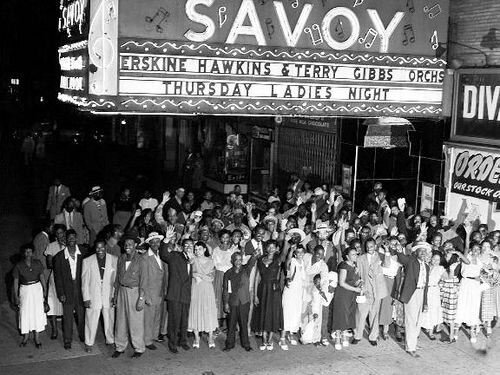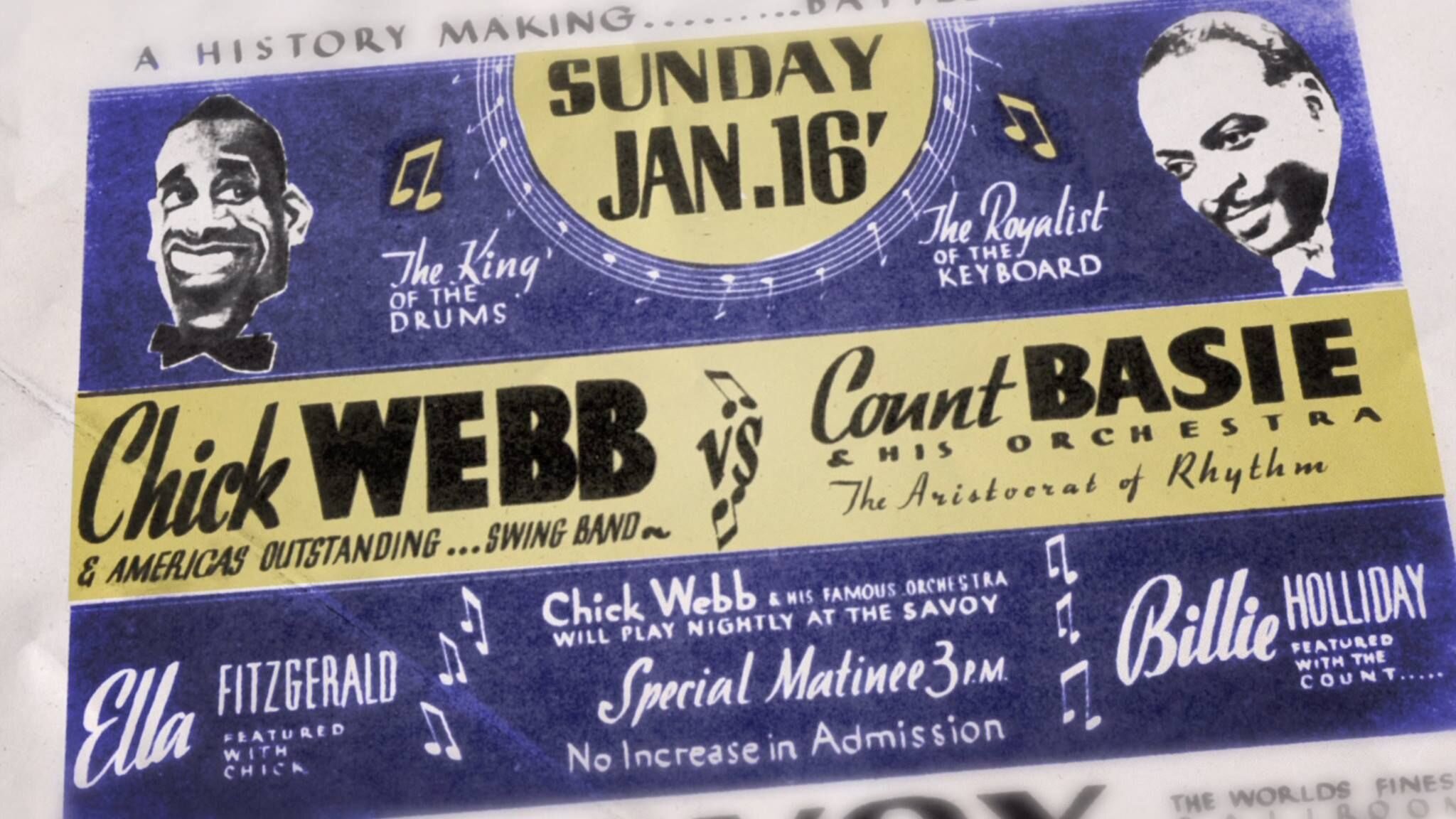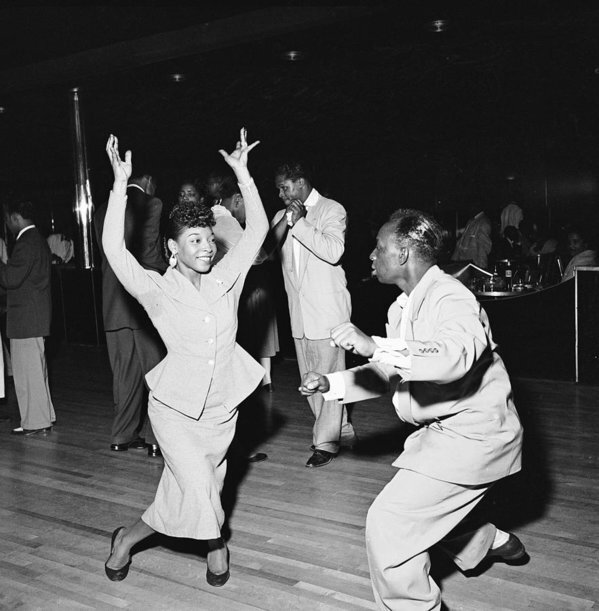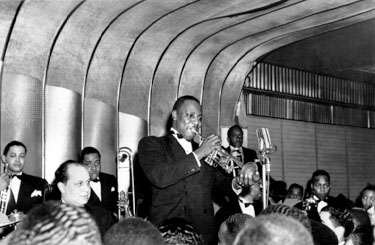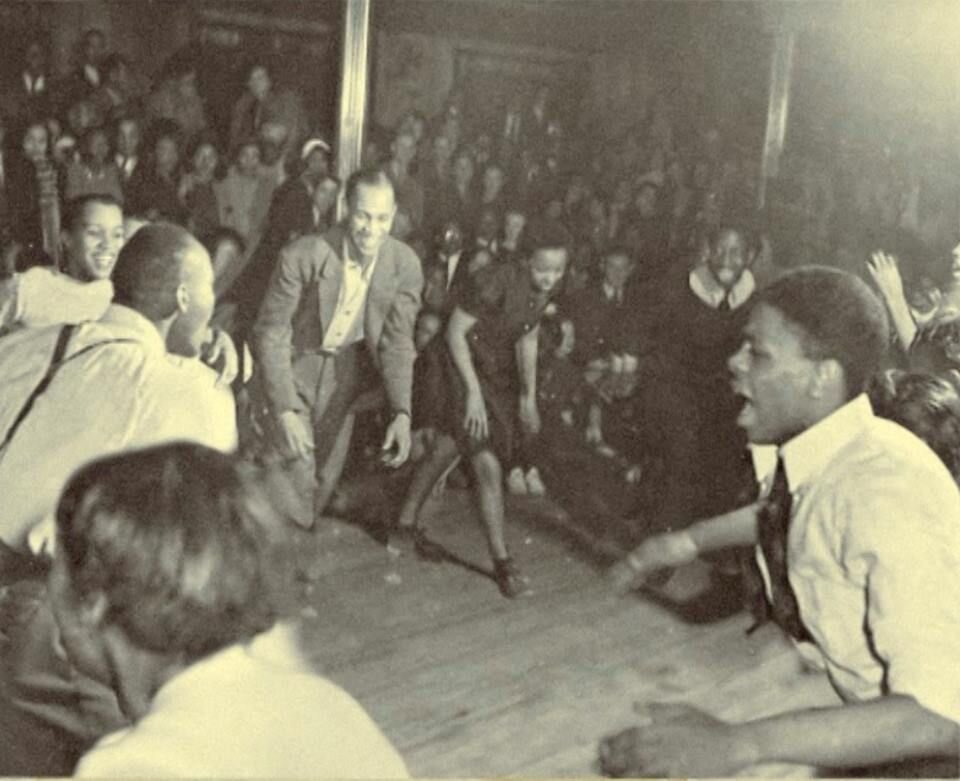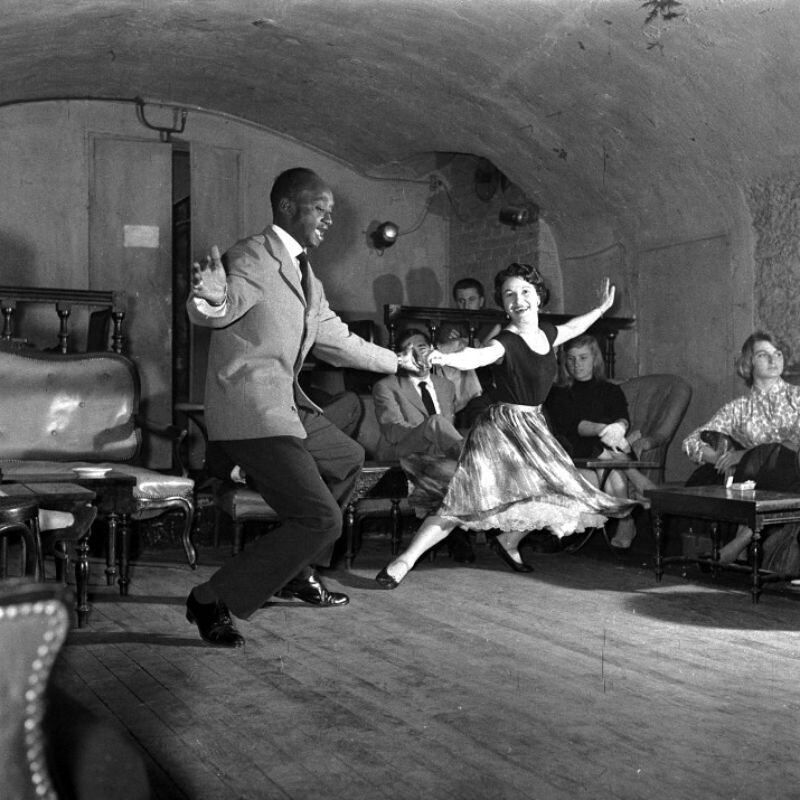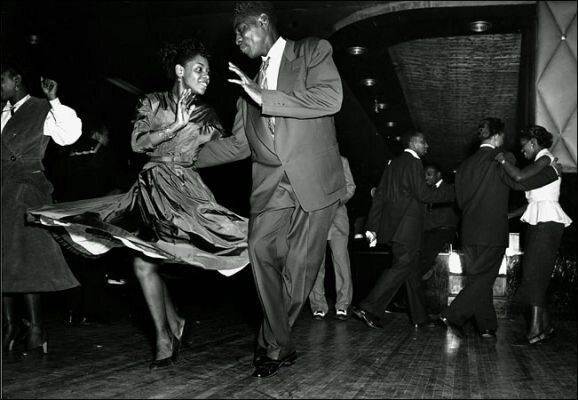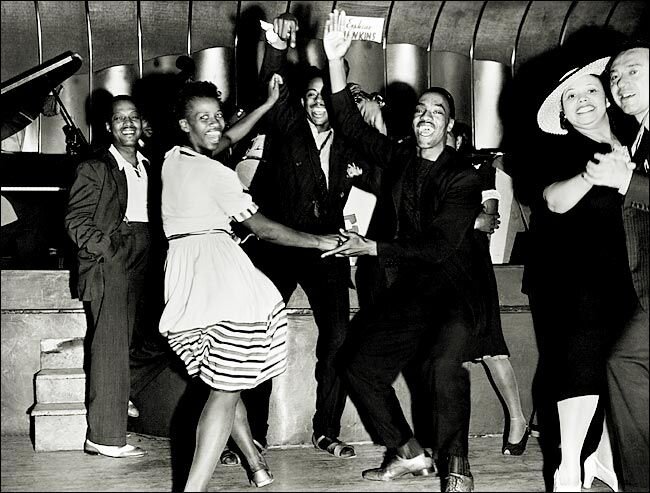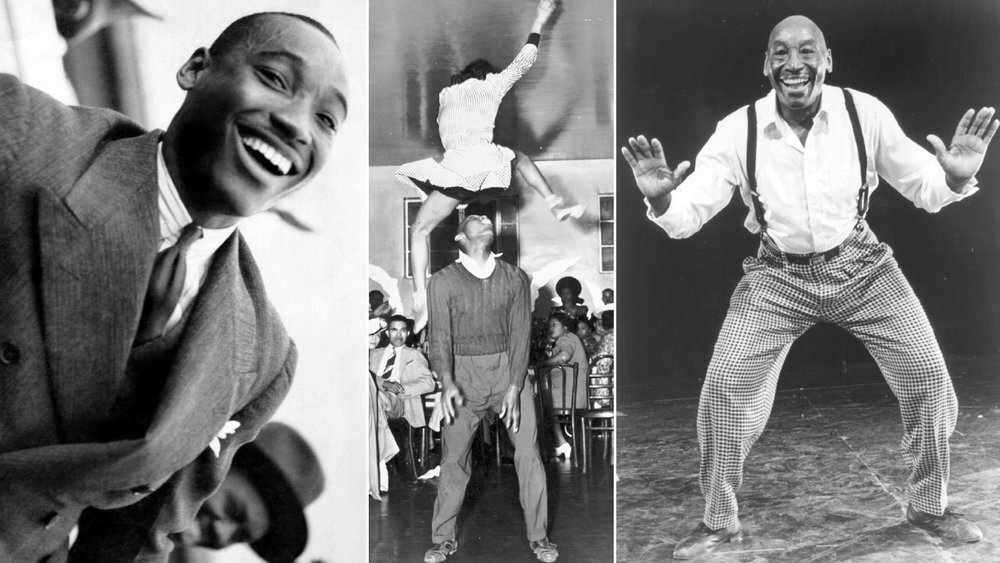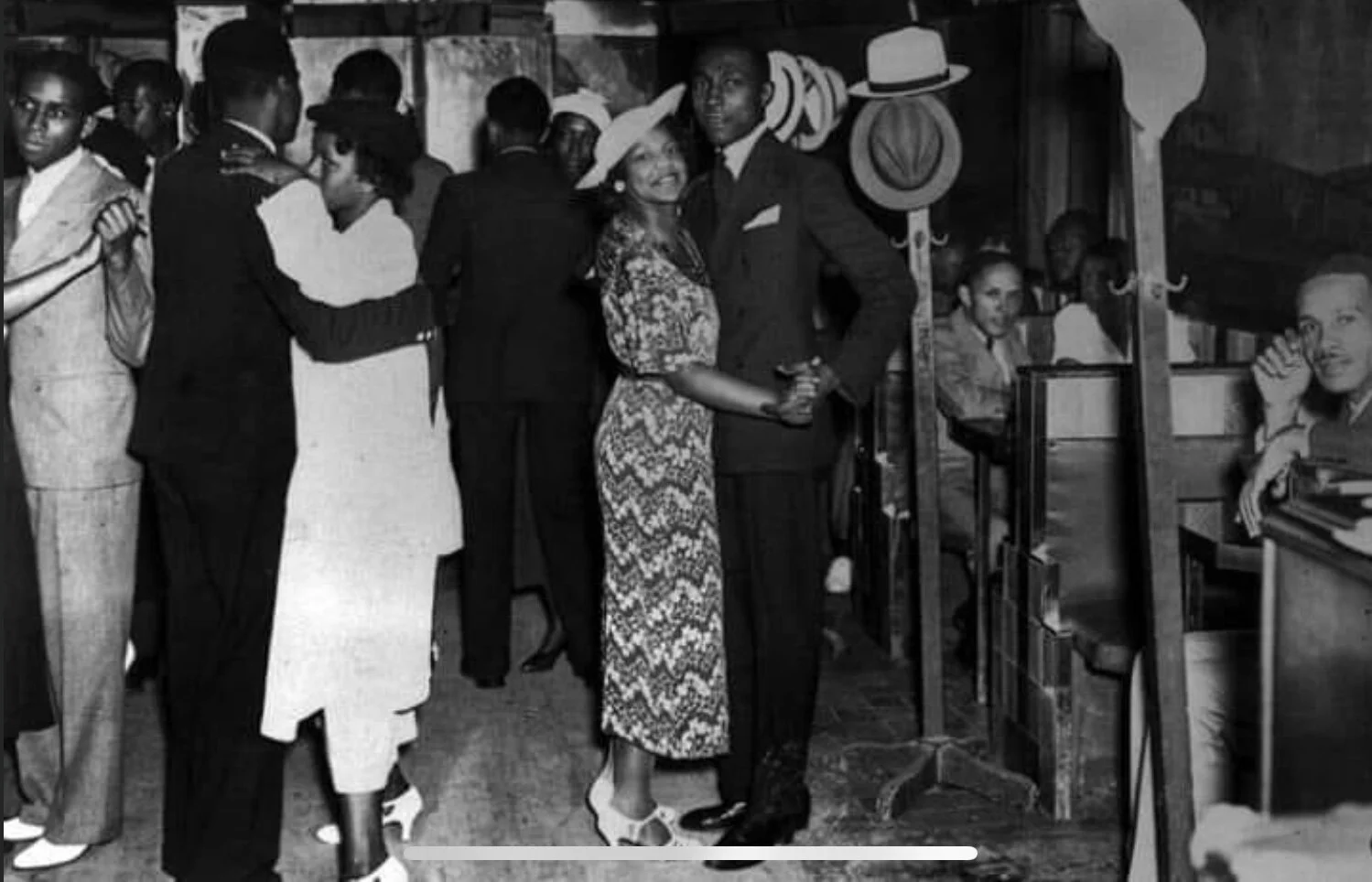Origins of Swing Dancing
Disclaimer: Information on this page has been gathered from a variety of sources and intended for educational purposes only to support Rule 4.1.1. and Rule 4.1.6. of Sugarfoot Stomp’s Constitution. If there is additional information and/or changes needed to the text, please contact us via the ‘keep in touch’ page.
Below is a very brief explanation outlining of the origins of Swing Dancing.
Swing Dancing originated in Harlem, New York City in the late 1920s. It continued its popularity through to the late 1940s and beyond. The Swing Dance style that was widely danced was called Lindy Hop. The rhythms in Lindy Hop match the Jazz music swing beat. So the two go hand in hand.
The Savoy Ballroom in Harlem was a place for Black Americans to dance Lindy Hop and connect with the brilliant Jazz musicians. Chick Webb, Ella Fitzgerald, Count Basie, Erskine Hawkins & Terry Gibbs Orchestra (see the marquee in the photo below), just to name a few, played at the Savoy Ballroom. The Savoy Ballroom was famous for its ‘Battle of the Bands’ where two Jazz bands would face off against each other in the ultimate Jazz music showdown.
A popular dance troupe called Whitey's Lindy Hoppers performed swing dancing around the world and featured dancers such as Frankie Manning, Norma Miller, Willa Mae Ricker, Al Minns, Leon James- just to name a few! The Savoy Ballroom was a place where they created, practised, and collaborated.
The Savoy Ballroom
Harlem, New York City
Even with the changing of popular music throughout the following decades, swing dancing was ever-present in Black communities, passed down through the generations.
We acknowledge there is more research to be done into the swing dancing narrative as told from Black perspectives, as we are guests in Black American culture.
Watch Tanita Dee below explain the journey of Lindy Hop!
“I’m not interested in fame and glory. It’s just that I would like others to know what a happy dance this is.
”
Swing Dancing began and continues in Black communities. We strive to respect and honour this by celebrating and spreading the joy Lindy Hop brings to people who dance it.
Today, it is a dance style that keeps on developing with our global swing dance community. Social Media tools shares swing dance and ease of global travel connects dancers like never before.
While we look towards the future, we are reminded to always respect the past, listen with empathy, to remain educated and mindful of the origins of this beautiful, powerful, living, and creative, black cultural art form.
Memories of the Savoy Ballroom
Harlem, New York City
Learn More
Education is a key part of developing understanding and context around Swing Dancing.
Below are resources to help guide thinking and korero around this emerging conversation. Set aside an hour to watch each one.
The Growing Global Conversation
PhD dissertation, Thriving in Crisis: The Chick Webb Orchestra and the Great Depression by Christi Jay Wells. This talk provides researched content around one of the great bands of the Savoy Ballroom and the role the great depression played during the Swing Dance era.
ILINDY featuring Grey Armstrong and Jo Hoffberg which is discussing Lindy Hop and Blackness.
Swim Out Costa Brava 2022 - Jazz Culture Talk with Remy Kouakou Kouame & Helena Martins discussing Swing Dancing and cultural appreciation.
FROM YOUTUBE
Credits
We are so lucky to have Christi Jay Wells speak on this subject. Their PhD dissertation on Chick Webb won a major award: The Wiley Housewright Dissertation.
FROM YOUTUBE:
Credits
In this interview with Grey Armstrong we will get into part 2 of his blog series on iLindy.com, Let's dig in on how Lindy Hop turned into a community where Black dancers and Black culture aren't welcome. It's important to understand this history to build a more inclusive and respectful community moving forward.

